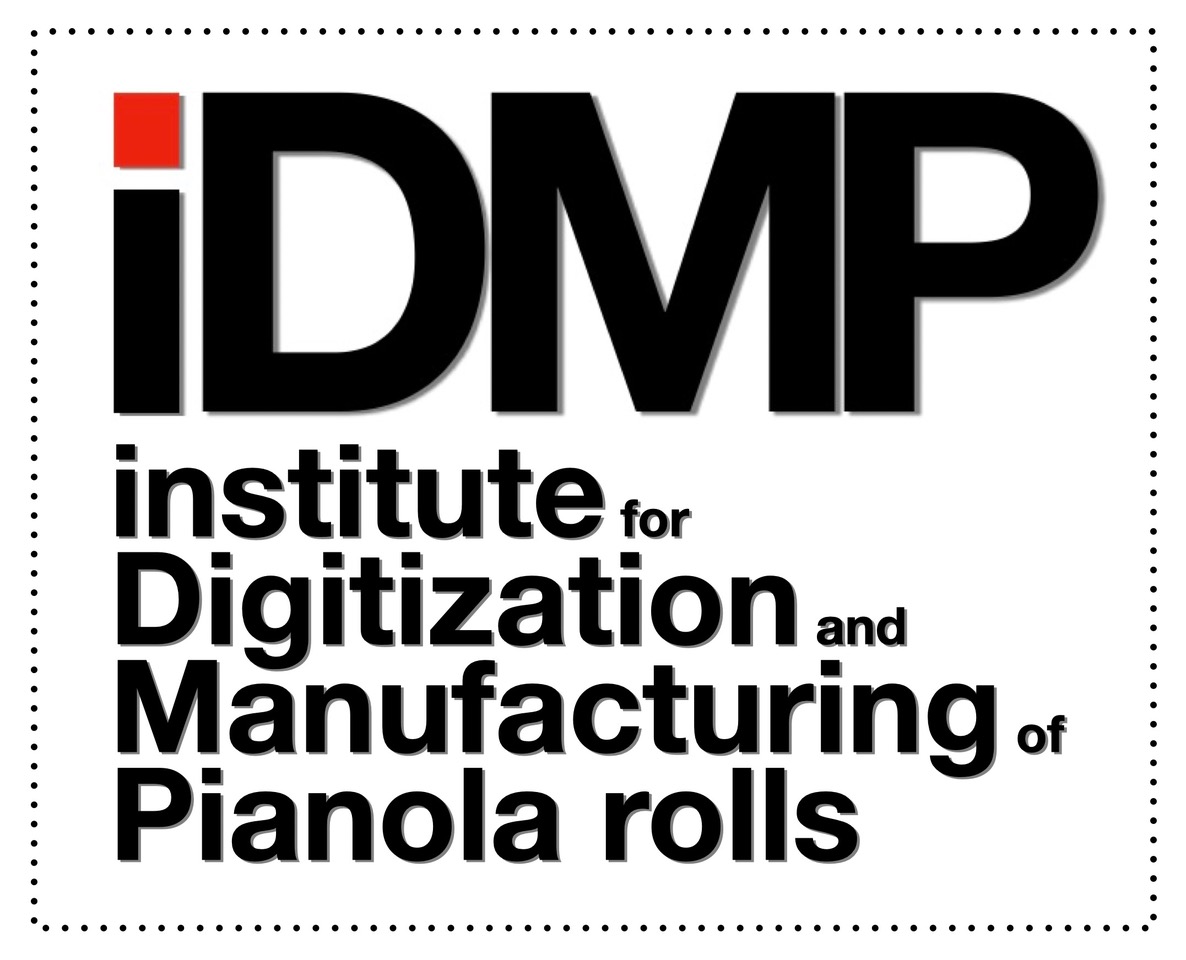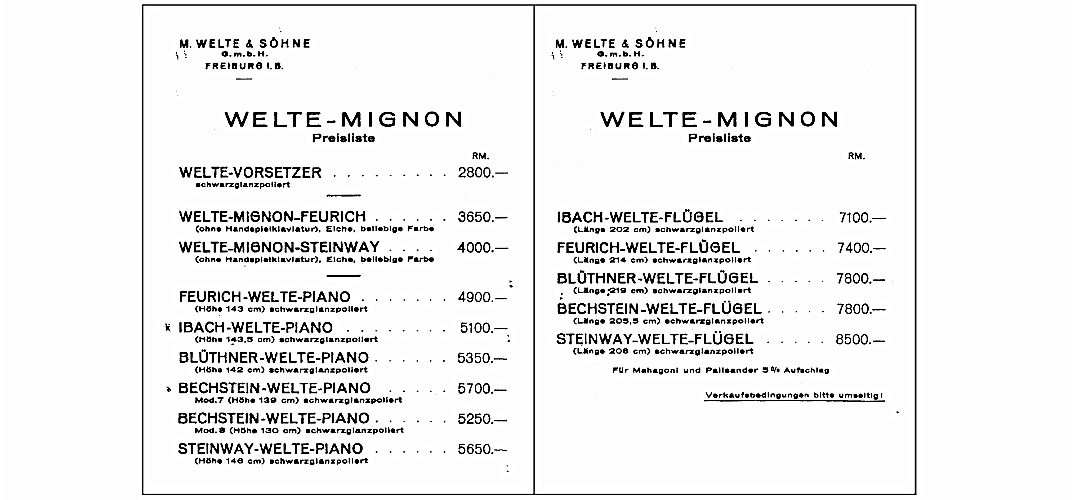Only very well-off members of the growing upper middle class and the rich and very rich upper class could acquire a pianola and buy additional music rolls. If you consider that in 1910 more than 40% of the population still had an annual income of less than 900 marks and the vast majority of the remaining 60% of the population had an annual income of less than 3000 marks - and that a single person needed around 1500 marks for a simple living, it quickly becomes clear from the prices of the pianolas mentioned below that only very few could really afford such a system.
A pianola, and especially a reproduction piano, was a luxury item. And yet all manufacturers were able to profit so significantly from the rapidly growing prosperity of more and more households as a result of industrialisation that the manufacture of pianolas was one of the most important branches of the economy between ~1908 and ~1920. The Welte-Mignon price list in the cover picture dates from 1928.
A Steinway Spirio - the modern reproduction system at Steinway & Sons - starts at around 170,000.00 euros for a B grand piano today. This corresponds to the price level at that time in relation to today's average annual income in Germany of approx. 60,000.00 euros. In other words, 2-3 annual salaries - which even today only the very wealthy can afford. A completely restored Welte, Hupfeld or Philipps brand reproduction instrument costs around 50,000.00 euros today.
The following price information is taken from the original catalogues of the manufacturers at the time:
Preis 1904 eines Aeolian 65er Pianola Vorsetzers: ~1.250Mark
Preis 1904 einer Hupfeld Phonola Vorsetzers: ~850Mark
Preis 1905 einer Hupfeld Phonola Vorsetzers: ~950Mark
Preis 1908 eines Spaethe Pianist Pianola Klaviers: 1.850Mark
Preis 1910 eines Buff-Hedinger Feurich Pianola Klaviers: 2.100Mark
Preis 1910 eines Buff-Hedinger Feurich Pianola Flügels: ab 3.400Mark
Preis 1911 eines Welte-Mignon Vorsetzers: ~2.100Mark
Preis 1911 eines Philipps DUCA/Pianella-Concert-Pianos: 3600Mark
Preis 1912 eines Hupfeld DEA Rönisch Flügels (2,15m): 6.500Mark
Preis 1913 eines Hupfeld Phonola Klaviers: 1.550Mark
Preis 1925 eines Hupfeld Triphonola Rönisch Flügels: 10.900Mark
Preis 1929 eines Hupfeld Triphonola Schiedmayer & Söhne Flügels: 5.950Mark
Ein weiteres interessantes Detail aus den Feurich Verkaufsbüchern ist die Entwicklung der Verkaufspreise während der Inflation. Hier finden Sie die Entwicklung bis 24. September 1923 für das am meisten verkaufte Feurich Duca Piano („Eiche roh Mod III“).
Date of sale / selling price in Reichsmark
01Sep1915 / 746
22May1916 / 818
27Nov1916 / 895
24Jun1918 / 2.170
26Apr1920 / 2.400
07Jun1920 / 3.600
12Jan1921 / 7.100
27Jan1921 / 9.600
23Apr1921 / 15.110
31.Dez1921 / 12.600
01May1922 / 42.000
05Jul1922 / 55.000
07Jul1922 / 49.500
31Aug1922 / 102.000
07Feb1923 / 4.995.000
26May1923 / 8.050.000
10Sep1923 / 22.313.367.925
24Sep1923 / 39.243.623.000


